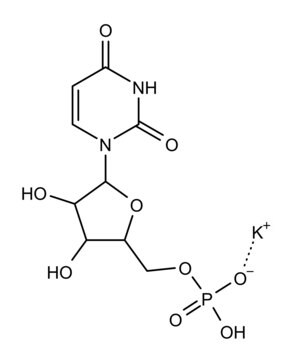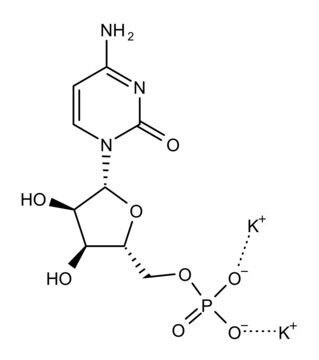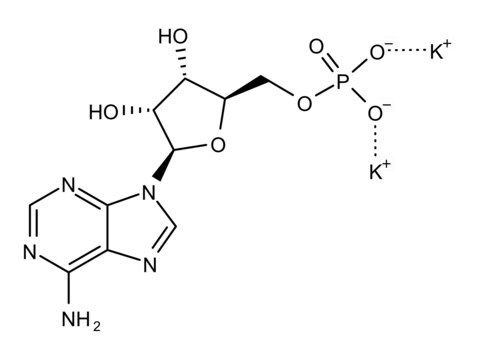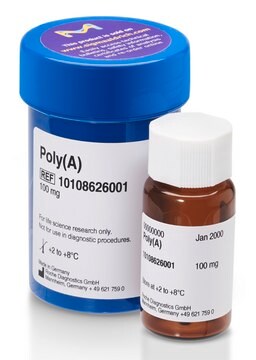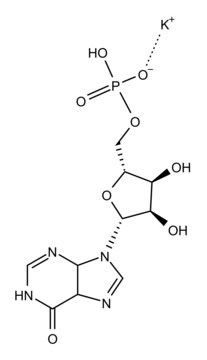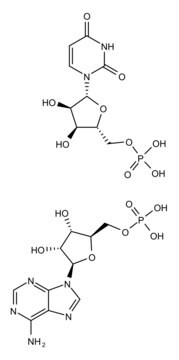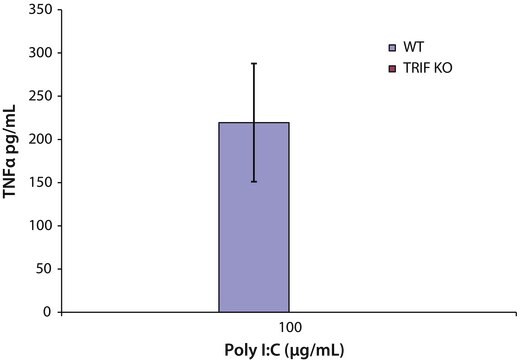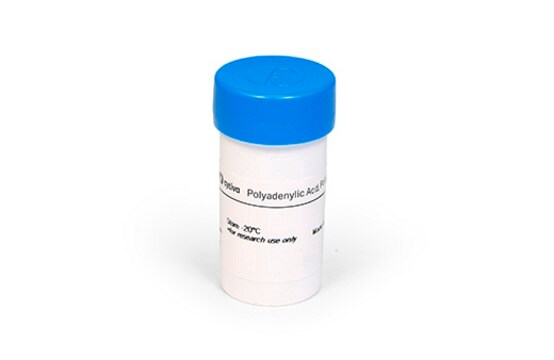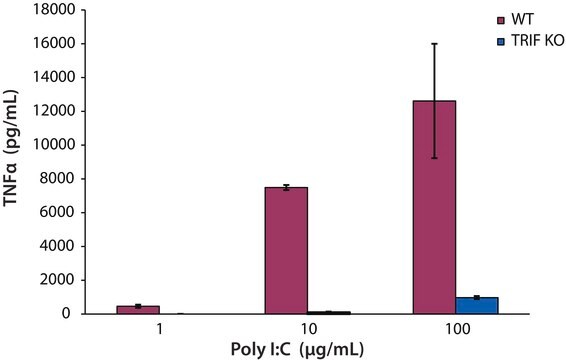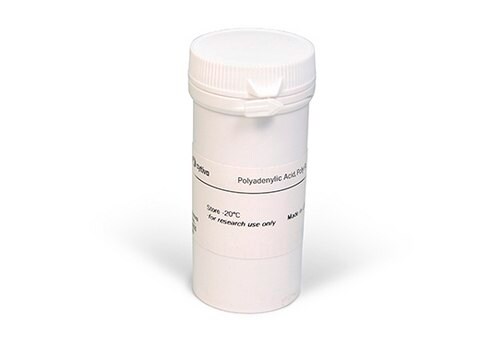P4404
Polyguanylic acid potassium salt
lyophilized powder
Sinónimos:
Poly(G) potassium salt
Iniciar sesiónpara Ver la Fijación de precios por contrato y de la organización
About This Item
Productos recomendados
origen biológico
enzyme from (synthesis)
Nivel de calidad
Ensayo
≥95% (TLC)
Formulario
lyophilized powder
calidad
≤5% free nucleotides
solubilidad
water: 19.60-20.40 mg/mL, clear to slightly hazy, colorless to light yellow
temp. de almacenamiento
−20°C
¿Está buscando productos similares? Visita Guía de comparación de productos
Descripción general
Polyguanylic acid takes up a four-stranded helical structure. It is synthetically produced in Thermus thermophilus from guanosine diphosphate (GDP) and its synthesis is catalyzed by the enzyme polynucleotide phosphorylase.
Aplicación
Polyguanylic acid (PolyG) is used to study the effects of ionizing radiation on formation and stability of G-quadruplex structures and as a target molecule for physicochemical studies of electronic excitation (vibrational spectra) of guanosine.
Polyguanylic acid potassium salt has been used:
- as a ligand for surface neuropilin-1 (NRP1) for internalization studies
- for intercalation studies with trisubstituted and disubstituted triazole-linked phenyl derivatives CL41, CL42 and CL2r50 using voltammetry method
- as a synthetic polynucleotide for agarose gel electrophoresis analysis
Acciones bioquímicas o fisiológicas
Polyguanylic acid acts as a ligand for scavenger receptor and reduces the surface expression neuropilin-1 in endothelial cells.
Nota de preparación
Prepared from GDP using polynucleotide phosphorylase
Código de clase de almacenamiento
11 - Combustible Solids
Clase de riesgo para el agua (WGK)
WGK 3
Punto de inflamabilidad (°F)
Not applicable
Punto de inflamabilidad (°C)
Not applicable
Equipo de protección personal
Eyeshields, Gloves, type N95 (US)
Elija entre una de las versiones más recientes:
¿Ya tiene este producto?
Encuentre la documentación para los productos que ha comprado recientemente en la Biblioteca de documentos.
Los clientes también vieron
Venugopal Karunakaran et al.
Journal of the American Chemical Society, 131(16), 5839-5850 (2009-04-04)
Guanosine monophosphate (GMP) in aqueous solutions has been studied with femtosecond broad-band transient absorption spectroscopy and by quantum-mechanical calculations. The sample was excited at 267 or 287 nm and probed between 270 and 1000 nm with 100 fs resolution, for
Zhong-yuan Kan et al.
Nucleic acids research, 35(11), 3646-3653 (2007-05-10)
Chromosomes in vertebrates are protected at both ends by telomere DNA composed of tandem (TTAGGG)n repeats. DNA replication produces a blunt-ended leading strand telomere and a lagging strand telomere carrying a single-stranded G-rich overhang at its end. The G-rich strand
Picosecond infrared probing of the vibrational spectra of transients formed upon UV excitation of stacked G-tetrad structures.
McGovern DA, Quinn S, Doorley GW, et al.
Chemical Communications (Cambridge, England), 28, 5158-5160 (2007)
D Grygoryev et al.
Radiation research, 173(1), 110-118 (2010-01-01)
The ability of guanine-rich sequences to form quadruplex structures in telomeres for example is important in a number of biological processes such as aging, carcinogenesis and gene regulation. Ionizing radiation can cause damage to guanine moieties that can affect the
A study of the pH dependence of electronically excited guanosine compounds by picosecond time-resolved infrared spectroscopy.
McGovern DA, Doorley GW, et al.
Photochemistry and Photobiology, 8, 542-548 (2008)
Nuestro equipo de científicos tiene experiencia en todas las áreas de investigación: Ciencias de la vida, Ciencia de los materiales, Síntesis química, Cromatografía, Analítica y muchas otras.
Póngase en contacto con el Servicio técnico